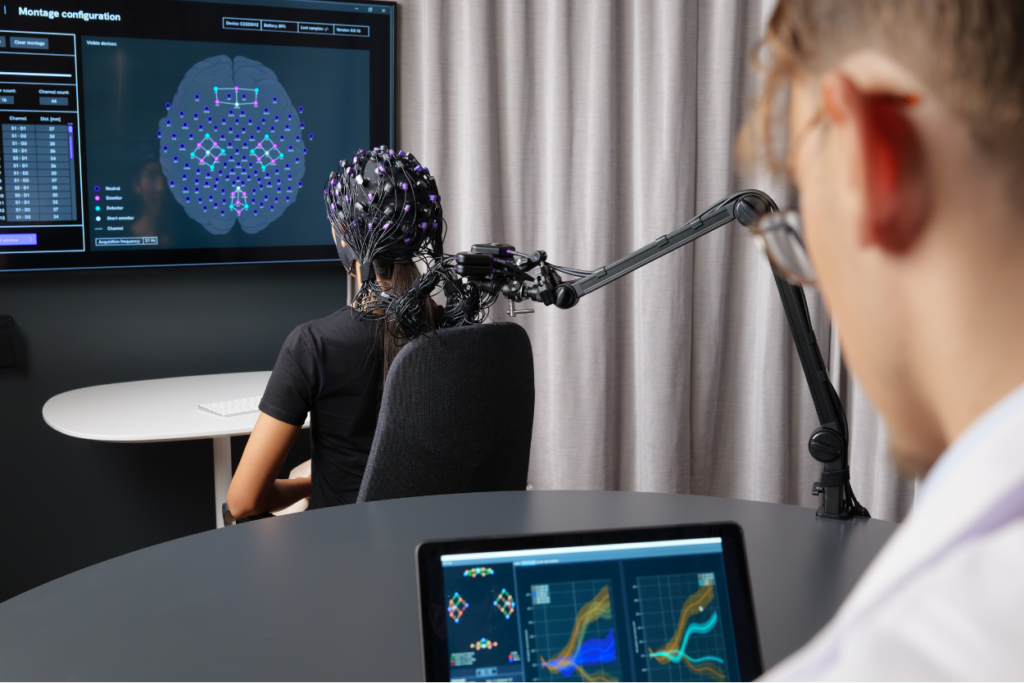Introduction
How do autism spectrum disorder (ASD) shape the way we learn and generalise new information? Stacy Moppert has just wrapped up a Pathfinder-funded investigation that tackles this question head-on, pairing classic conditioning paradigms with monitoring the prefrontal cortex activity (PFC) via our Photon Cap functional-near-infrared-spectroscopy (fNIRS).
Generalization is the ability to apply what you have learned in one context to new but related situations. It is essential for flexible behavior. Findings on learning and ASD have been mixed, with ASD being linked to benefits and deficits. Stacy Moppert wants to clarify behavioural and neuronal signatures of learning-based generalization in relation to ASD.
Method
Hypothesis
Stacy Moppert hypothesized that those with higher autistic traits, as determined by the Autism Spectrum Quotient (AQ) questionnaire, will have a greater amount of individual differences in their ability to generalize and increased prefrontal cortex activity compared to those with lower autistic traits who will have similar patterns of generalization and lower prefrontal cortex activity.
Participants
The research was conducted on 60 psychology students. The subjects completed the Autism Spectrum Quotient (AQ) questionnaire, on the basis of which they were selected into groups with high autistic traits and low autistic traits.
Procedure
In the first experiment, subjects were trained to learn the pairing between the Prototype shape, referred to as a Sea Ghost Prototype, and the image of a dog (CS+) and the unpairing of a Prototype shape from another family, referred to as a Non-Sea Ghost Prototype (CS-). After the initial training, subjects were given a generalization task to identify if a shape is a Sea Ghost or Not a Sea-Ghost. In total, 10 shapes, with 5 being distortions of a Sea Ghost and 5 being a distortion of a Non-Sea Ghost was used in the task. Then, participants was asked to identify which stimuli evoke conditioned responses in recognition trials.
In the second experiment the same college students were trained on the same paradigm using a spectrum of colors stemming from blue to green. The blue color (CS+) was presented with a dog picture while an unpairing of the stimulus will occur with a green color (CS-). Afterwards, the adults were participating in a generalization task with 14 stimuli stemming from blue patch (CS+) to the unpairing green color (CS-). Then, participants were asked to identify what stimulus results in the (CS+) in recognition trials.
Summary
Researchers used our Photon Cap to investigate the relationship between activity in the prefrontal cortex (PFC), performance in a generalisation task and autistic traits. The results of this study will expand our knowledge of heterogeneous learning outcomes and atypical brain activity associated with autistic traits. Examining autistic traits in a diverse population can help us to better understand the neural mechanisms behind specific traits and learning, thereby mimicking the heterogeneity observed in this disorder.
